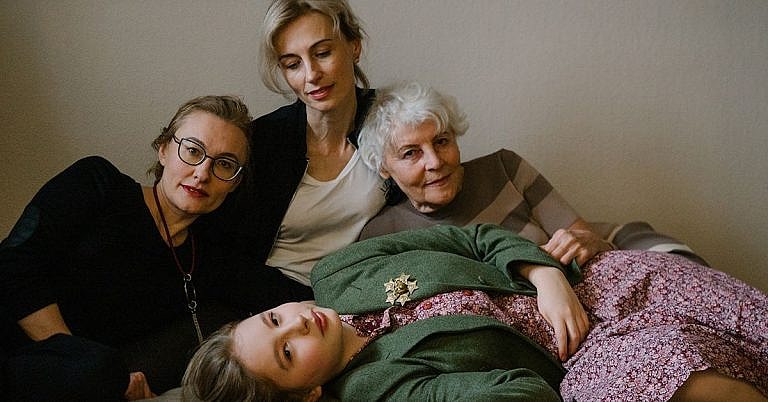Anti-Aging Treatment
Definition & Overview
Anti-aging treatments are specifically designed to reduce the appearance of wrinkles, fine lines, and sagging skin. These treatments are commonly performed on parts of the body that are most susceptible to the earliest signs of aging, such as the face, neck, and hands. Depending on the extent of the condition, treatment options range from over-the-counter ant-aging products such as creams and lotions to Botox injections and highly invasive surgical procedures such as facelift. Each option comes with certain risks, so it is important for patients to have a thorough discussion with their skin care and anti-aging specialists before undergoing any type of treatment.
Who Should Undergo & Expected Results
Anti-aging treatments are highly recommended for those who are prone to developing wrinkles and fine lines, as well as those who have loose, sagging skin. People who usually take advantage of these treatments are those who are at least 30 years old. Research shows that these are more popular with the female population, however, more and more male patients are now starting to appreciate the benefits of anti-aging treatments.
Anti-aging treatments work in different ways, but they are mostly geared towards restoring the skin’s natural collagen supply. Collagen, a protein found in connective tissues, is responsible for maintaining the skin’s plumpness. However, due to the natural aging process, the body’s collagen supply tends to deteriorate over time.
Today, there are different techniques used to stimulate the production of collagen and with the help of new technologies, side effects such as damage to the topmost skin layer, are significantly minimized.
The expected results may differ depending on the type of treatment and the specific type of substance used. The most common types of ingredients in anti-aging treatments include:
Retinol – A derivative of vitamin A, retinol is a milder form of retinoid. Although it can takes several weeks to take effect, it is proven to be highly effective in reducing wrinkles, unclogging pores, reducing the appearance of brown age spots, and improving the skin’s overall texture.
Hyaluronic Acid – Hyaluronic acid is a popular humectant, a substance that draws water from the air, which makes it a natural and very effective moisturizer. It works great in hydrating the skin, and is found not only in prescription anti-aging medications and cosmetic treatments, but also in over-the-counter lotions.
Niacinamide – Niacinamide works by preventing melanin from becoming visible. The overproduction of melanin causes pigmentation of the skin, which can cause sunspots and other unsightly marks and tags. This vitamin B3 derivative is typically used to treat acne scars, age spots, and sunspots by lightening them so they become less visible.
How Does the Procedure Work?
Although various anti-aging treatments are performed using different techniques, they aim to deliver the same results; to achieve younger-looking, smoother, and aesthetically pleasing skin.
The most popular procedures nowadays are:
Fractional CO2 Laser Skin Resurfacing – This is currently the gold standard in wrinkle removal that is widely preferred by both patients and anti-aging specialists not only because it offers impressive and quick results but also because it does not come with harsh side effects and lengthy downtime. The treatment uses beamlets of energy light that penetrates the tiny holes in the skin, putting the body’s natural collagen production on fast-forward. Unlike traditional techniques, this procedure produces exceptional results without damaging the topmost layer of the skin. As such, recovery time is minimized. However, redness and swelling are to be expected for about one to two days following the procedure.
Wrinkle Injections – The technology behind wrinkle injections has improved tremendously over the years, and has revolutionized the anti-aging industry. Wrinkle injections work by filling up the skin to prevent the gaunt, hollow appearance caused by the natural loss of skin elasticity due to aging. This is why they are also called wrinkle fillers or dermal fillers. Fillers now come in many types, depending on the brand, such as Perlane, Artifill, Radiesse, and Juvederm, among others. Each one may use a different substance to act as the filler, but the way they are applied is basically the same. The best fillers these days are those that contain hyaluronic acid, which inhibits the breakdown of collagen. Thus, aside from filling up the skin, the treatment also naturally helps keep the aging process on hold for as long as one to two years.
Botox Injections – These use different forms of botulinum toxin to temporarily paralyze (effects last about six to eight months) muscle activity to prevent the appearance of wrinkles, frown lines between the eyebrows, crow’s feet, and forehead furrows.
Facelift – Perhaps the most comprehensive approach to anti-aging, a facelift requires surgically lifting the facial skin and re-draping it on the face, tightening and smoothening it in the process. Also known as rhytidectomy, this is an invasive procedure that offers guaranteed results. It is often combined with other procedures to achieve exceptional results.
Possible Complications and Risks
The risks and complications of anti-aging treatments are very rare, but all treatments come with some level of risk as well as some side effects. However, these can be minimized and even totally eliminated by consulting certified skin care and anti-aging specialists. The most common side effects are:
- Irritation
- Sensitivity to sunlight
- Dryness
- Allergic reaction
In the case of cosmetic treatments that require some level of invasiveness, there is a risk of bleeding and infection, especially during the recovery process. Surgical procedures such as facelift also require lengthy recovery and downtime that can take more than a couple of months.
References:
- National Institute on Aging: “Skin Care and Aging.”
- American Academy of Dermatology: “Mature skin” and “Protection Against Photoaging.”
- FDA.
/trp_language]
[trp_language language=”ar”][wp_show_posts id=””][/trp_language]
[trp_language language=”fr_FR”][wp_show_posts id=””][/trp_language]
**Question: What is the best anti-aging treatment?**
**Answer:**
Anti-aging treatments encompass a wide range of modalities, encompassing both invasive and non-invasive techniques. The effectiveness of any particular treatment depends on individual needs, skin type, and desired outcome. Some of the most popular and well-researched anti-aging treatments include:
* **Injectables:**
* Botox: Relaxes facial muscles, reducing wrinkles.
* Fillers: Plumps up skin, reducing wrinkles and lines.
* **Laser Therapy:**
* Non-ablative Laser: Stimulates collagen production, improving skin texture and radiance.
* Ablative Laser: Removes the outer layer of skin, promoting regeneration and reducing wrinkles.
* **Skincare Products:**
* Retinoids: Derived from vitamin A, retinoids increase cell turnover and reduce wrinkles.
* Vitamin C: An antioxidant that protects against free radicals and brightens skin.
* Hyaluronic Acid: A humectant that attracts and retains moisture, reducing dryness and wrinkles.
* **Lifestyle Changes:**
* Healthy Diet: A diet rich in antioxidants, vitamins, and minerals supports skin health.
* Protection from Sun Exposure: UV radiation damages skin and accelerates aging.
* Quitting Smoking: Smoking reduces blood flow to the skin, impairing oxygenation and nutrient delivery.
**Question: What are the benefits of anti-aging treatment?**
**Answer:**
The primary benefit of anti-aging treatments is improved skin appearance. Treatments can:
* Reduce wrinkles, fine lines, and scarring
* Improve skin tone and texture
* Increase skin hydration and elasticity
* Enhance facial contours
* Boost collagen and hyaluronic acid production
* Protect skin from damage caused by pollution and sunlight
**Question: What are the risks and side effects of anti-aging treatment?**
**Answer:**
The risks and side effects vary depending on the specific treatment:
* **Injectables:** Temporary bruising, swelling, or asymmetry
* **Laser Therapy:** Redness, dryness, or skin irritation
* **Skincare Products:** Irritation, allergic reactions
* **Lifestyle Changes:** None
**Question: What should I consider before choosing an anti-aging treatment?**
**Answer:**
To make an informed decision, consider the following factors:
* Your skin type and concerns
* The desired outcome and timeline
* The cost and availability of treatments
* Your health history and any allergies
* The reputation and experience of the healthcare professional
**Question: What is the future of anti-aging treatment?**
**Answer:**
The future of anti-aging treatments lies in:
* Advanced laser technologies with improved safety and efficacy
* Personalized treatments based on genetic and skin profile
* Non-invasive treatments that mimic the effects of surgery
* AI-driven skincare and device optimization
* Development of new ingredients and formulations








Anti-aging treatments are a way to help keep your skin looking youthful and healthy.